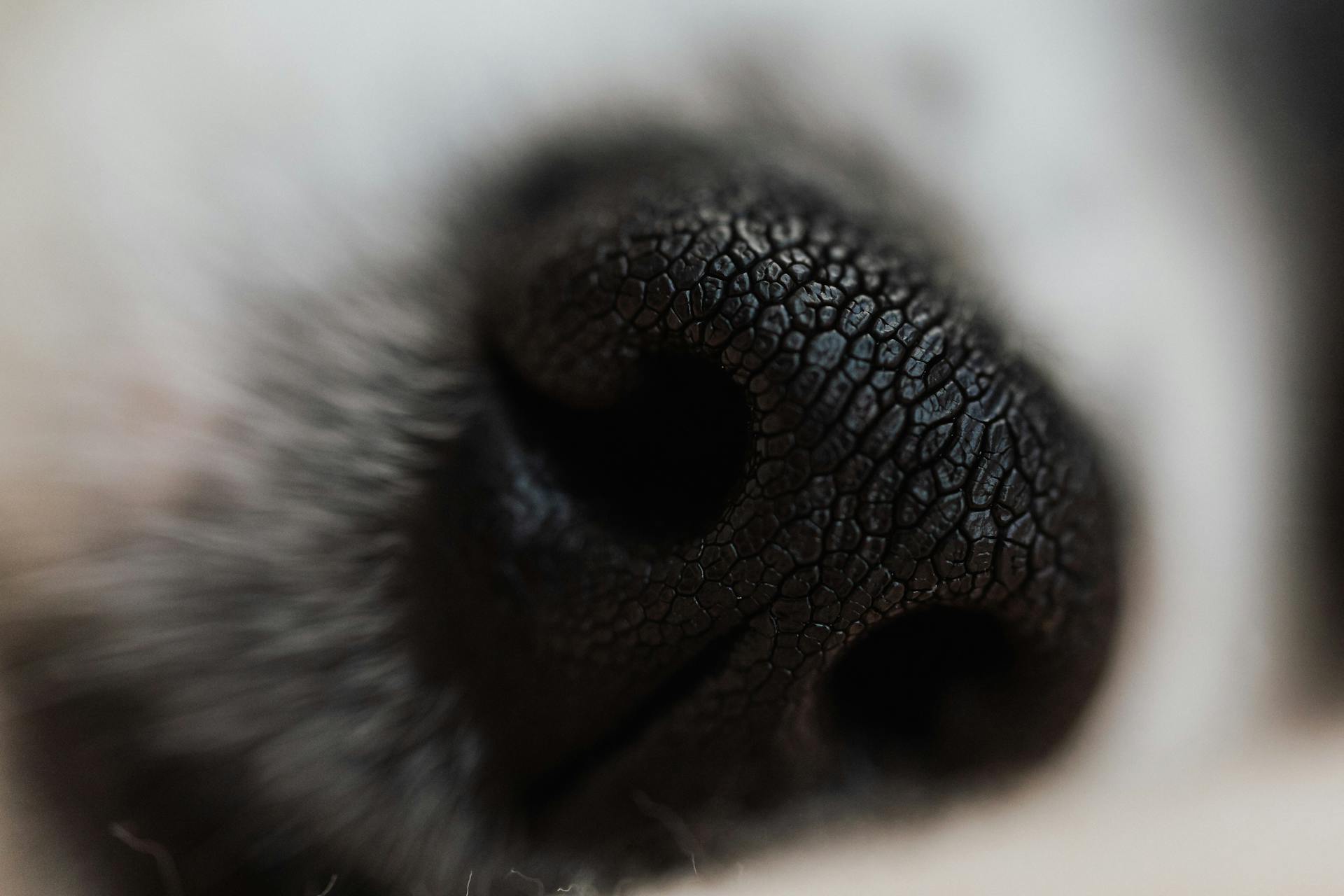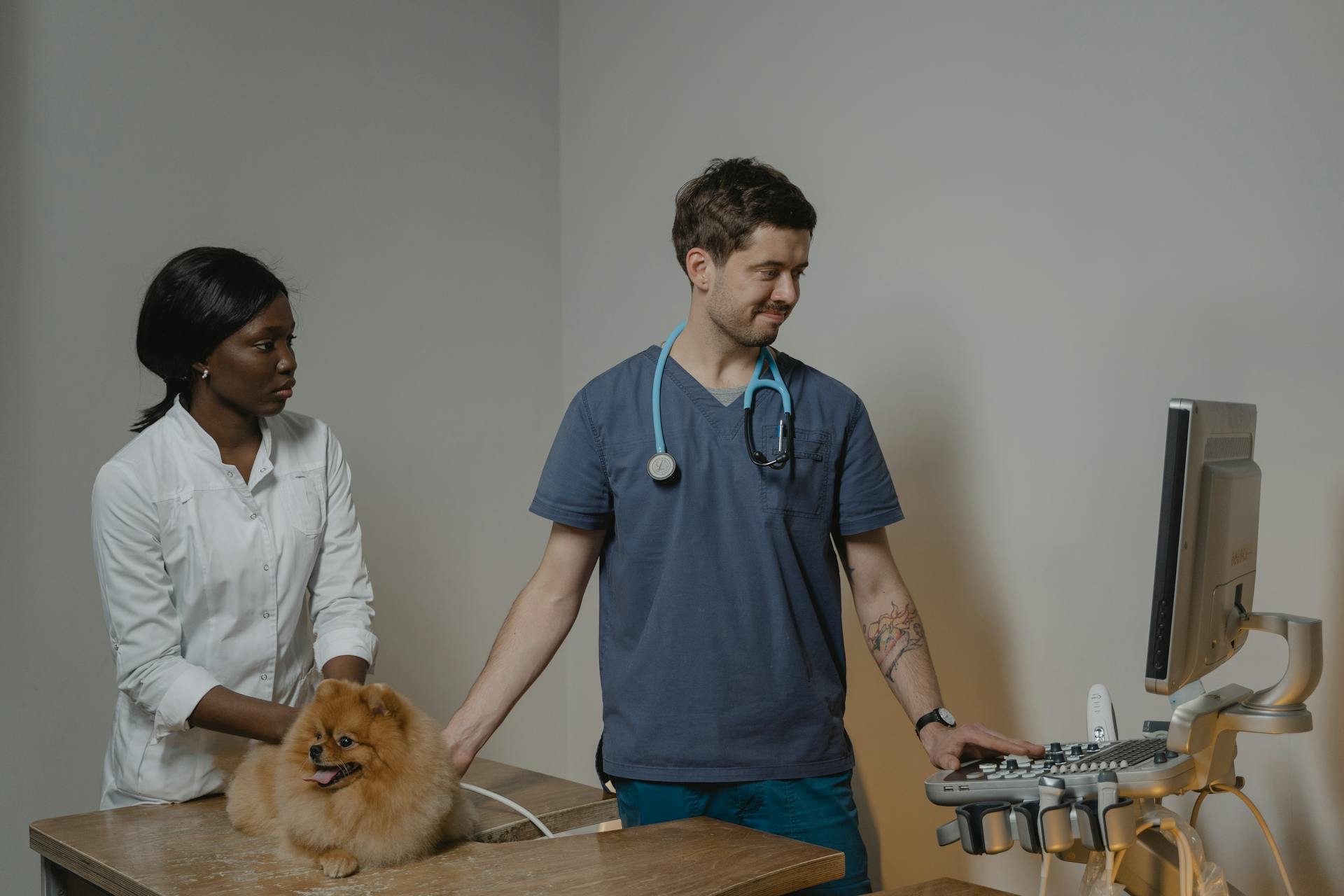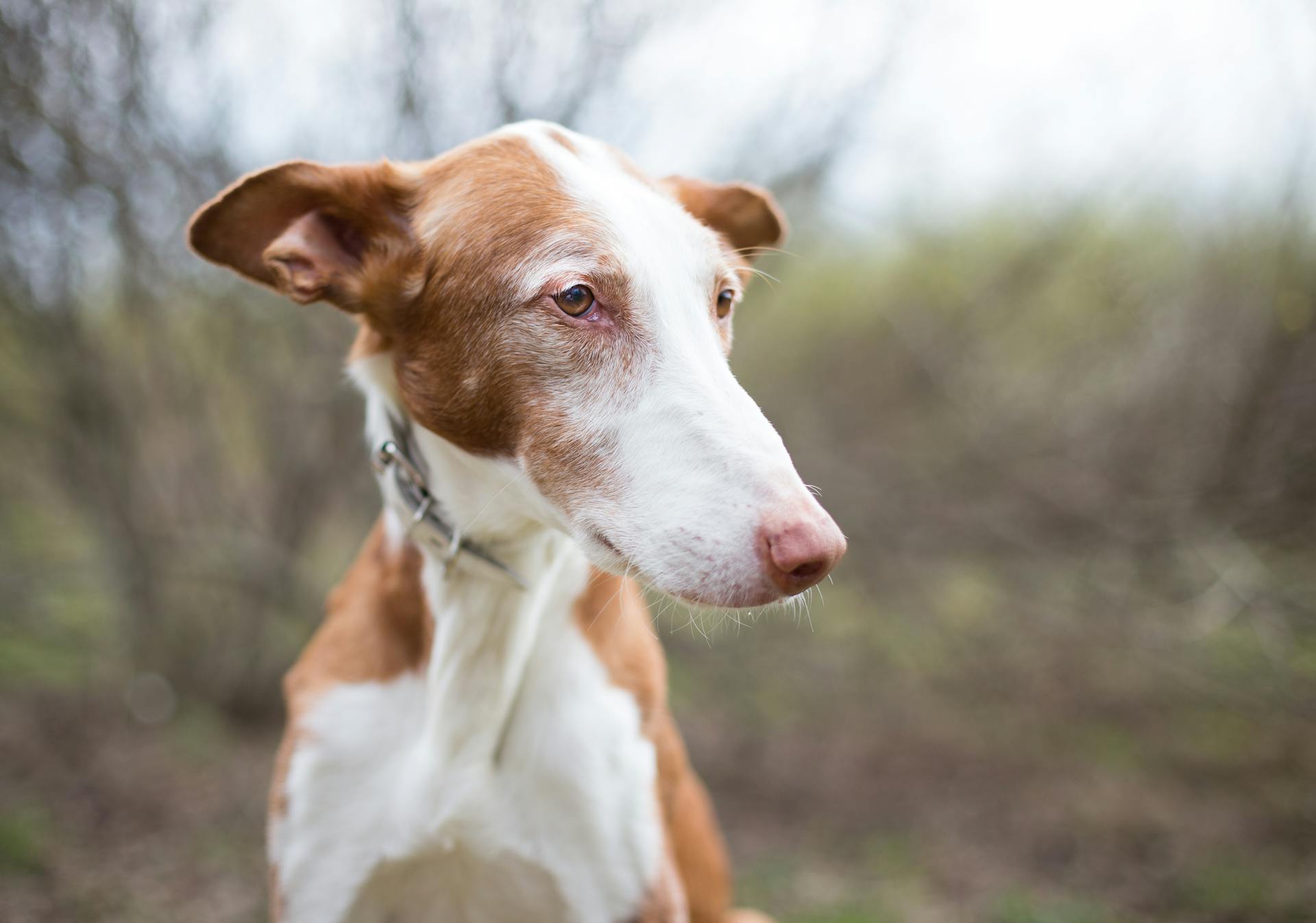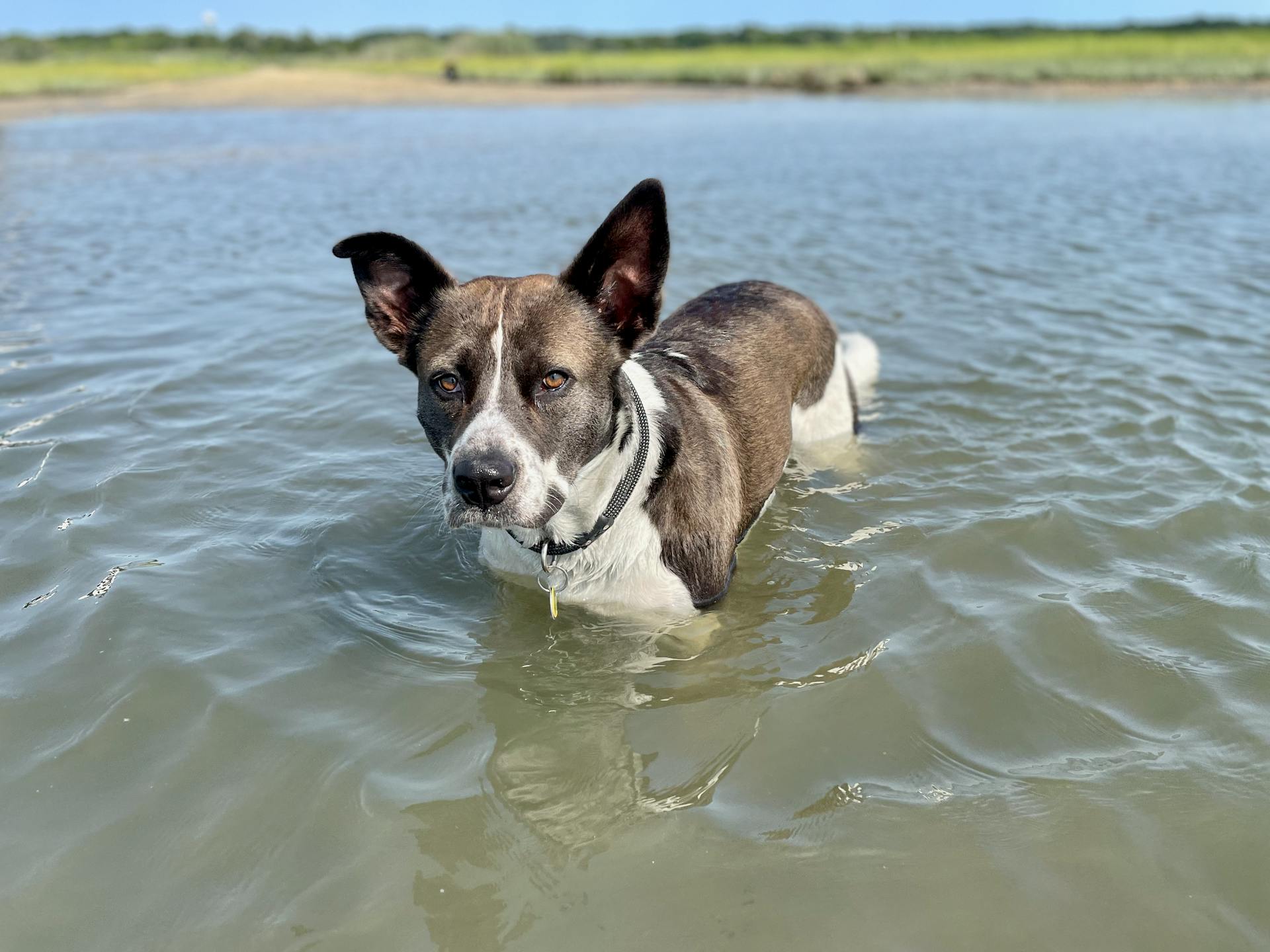
Diagnosing canine discoid lupus erythematosus requires a veterinarian to examine the dog's skin lesions and consider a range of factors, including the dog's age, breed, and medical history.
The lesions themselves are a key indicator of the disease, often appearing as circular or oval-shaped areas of hair loss and redness on the dog's face, ears, and legs.
Veterinarians may also use diagnostic tests such as a biopsy or skin scraping to confirm the presence of the disease.
A veterinarian may also take a complete medical history of the dog to rule out other potential causes of the lesions.
The exact cause of canine discoid lupus erythematosus is still not fully understood, but it is believed to be an autoimmune disease in which the dog's immune system mistakenly attacks its own skin cells.
Treatment for canine discoid lupus erythematosus typically involves a combination of medication and lifestyle changes to manage the symptoms and prevent further skin damage.
A unique perspective: Canine Systemic Lupus Erythematosus
Common medications used to treat the disease include corticosteroids and immunosuppressive agents.
In addition to medication, veterinarians may recommend a range of lifestyle changes to help manage the disease, including protecting the dog's skin from the sun and using medicated shampoos.
Regular veterinary check-ups are also essential to monitor the dog's response to treatment and make any necessary adjustments.
With proper treatment and care, many dogs with canine discoid lupus erythematosus are able to manage their symptoms and lead happy, healthy lives.
On a similar theme: Canine Leishmaniasis Treatment
What Is Canine Discoid Lupus Erythematosus?
Canine discoid lupus erythematosus, or DLE for short, is an auto-immune condition where the immune system mistakenly attacks its own cells. This can be a challenging diagnosis for dog owners to understand.
DLE is caused by the body's immune system reacting to its own DNA in dead skin cells as if it were foreign material. This reaction can lead to skin lesions and other symptoms.
Certain breeds of dogs are more prone to developing DLE, with German Shorthaired Pointers, German Shepherd Dogs, Collies, and Shetland Sheepdogs being the most commonly affected.
Curious to learn more? Check out: Autoimmune Disease in German Shepherds
Diagnosis and Detection
Diagnosing canine discoid lupus erythematosus can be tricky due to its similar symptoms with other disorders. Your veterinarian will ask about changes in your dog's environment or eating habits to rule out allergic reactions.
Your vet will want to know about any concerns you've noticed, such as ulcers or a change in your dog's nose color. This information will help them narrow down the possible causes of symptoms.
A skin biopsy is a crucial step in diagnosing DLE, as it helps your veterinarian determine the extent of the condition and rule out other potential causes. The biopsy involves taking small samples of tissue around the affected areas and lesions, which are then sent to a veterinary pathologist for interpretation.
Biopsy results are often used in conjunction with a physical exam, detailed history of your dog's medical care, and trial treatments to make a formal diagnosis of DLE.
Diagnosis and Detection
Diagnosing Discoid Lupus Erythematosus (DLE) in dogs can be a bit tricky, but veterinarians use a combination of clinical signs and diagnostic tests to confirm the condition.
A veterinarian will typically examine your dog's skin, looking for signs such as depigmentation, erythema, scaling, and loss of the normal cobblestone architecture on the nose. They may also perform a biopsy to confirm the presence of DLE.
The condition can be challenging to diagnose, especially in its early stages, as the symptoms can mimic other skin conditions. However, if your dog is experiencing skin lesions or other symptoms, it's essential to consult with a veterinarian as soon as possible.
Some breeds, such as Collies, Shelties, German Shepherds, Siberian Huskies, and Brittany Spaniels, are more prone to developing DLE. If your dog is one of these breeds, it's crucial to be aware of the potential risks.
Here are some common signs of DLE that your veterinarian may look for:
- Loss of normal “cobblestone” appearance of the nose
- Loss of pigmentation of the nose
- Crusting and thickening of the skin on the nose
- Ulceration and bleeding from the nose
- Pain and discomfort at the nose
In some cases, DLE can spread to other areas of the body, including the skin around the eyes, ears, and footpads. If your dog is experiencing any of these symptoms, it's essential to seek veterinary care immediately.
Diagnosis
Diagnosing discoid lupus erythematosus in dogs can be challenging due to its similar symptoms with other disorders.
A skin biopsy is required to diagnose DLE, and it's essential to take small samples of tissue around the affected areas and lesions.
Your veterinarian will want to know about any changes to your dog's environment or eating habits to determine if it's possible they're having an allergic reaction to something.
They'll also want to know about any concerns you've noticed, such as a change in your dog's nose color or ulcers.
Blood work will be done to eliminate other possible causes of symptoms, and formal diagnosis will be done via a physical exam, a detailed history of your dog's medical care, biopsy results, and how they react to trial treatments.
The biopsy sites are surgically closed with sutures and the samples are then sent to a veterinary pathologist for interpretation.
It's also beneficial to have the samples tested for types of bacteria, as the lesions are frequently secondarily infected.

Here are the key steps in the diagnosis process:
- Biopsy: A skin biopsy is required to diagnose DLE.
- Biopsy sites: The biopsy sites are surgically closed with sutures.
- Sample testing: The samples are sent to a veterinary pathologist for interpretation and tested for types of bacteria.
- Blood work: Blood work is done to eliminate other possible causes of symptoms.
- Physical exam: A physical exam is part of the diagnosis process.
- History: A detailed history of your dog's medical care is taken.
- Trial treatments: How your dog reacts to trial treatments is also part of the diagnosis process.
Treatment and Management
Canine discoid lupus erythematosus is a chronic condition that requires ongoing management to control symptoms. Treatment options are available to help manage the condition, but there is no cure.
Treatment typically involves a combination of medications and lifestyle changes to reduce symptoms and prevent flare-ups. Your veterinarian may prescribe topical steroids, such as tacrolimus, to help control the condition.
Avoiding excessive sun exposure is crucial in managing DLE, as UV radiation can exacerbate the condition. Using sunscreen on your dog, especially those with fair coats, can help prevent further damage.
In some cases, your veterinarian may prescribe oral medications, such as tetracycline and niacinamide, to help manage symptoms. However, these medications can have side effects, including vomiting, diarrhea, and anorexia.
Topical therapy can be used as the sole treatment for DLE or in conjunction with oral treatment. This is particularly beneficial in nasal-region-only DLE situations, where topical therapy can be applied directly to the affected area.
If this caught your attention, see: Canine Cancer Treatment
Systemic oral therapy may be used in conjunction with topical treatment, especially in multifocal DLE cases or localized DLE cases that are difficult to treat topically. This can include medications like tetracycline and niacinamide, or immunosuppressants like cyclosporine.
Your veterinarian will work with you to find the best treatment plan for your dog, which may involve a combination of medications and lifestyle changes. The goal is to find the lowest effective dose of each medication that will keep your dog free of symptoms.
On a similar theme: Lick Granuloma Treatment Dog
Recovery and Prognosis
Recovery from canine discoid lupus erythematosus is possible with treatment, but it's a lifelong process. Your dog will require continued monitoring and management to ensure their symptoms don't return.
Most dogs respond well to treatment and can have an excellent quality of life even with this condition. With the right care, their symptoms may disappear within a few days to months.
Since there is no known cause for DLE, there is no cure, and lifelong management will be necessary. Your veterinarian will suggest when to bring your dog back in and how to administer any medications prescribed.
The prognosis for dogs with DLE is generally good, with most dogs being able to be managed successfully for life. However, some dogs may experience occasional flare-ups of nose lesions.
Reducing sun exposure can help manage the condition in some dogs, as UV radiation appears to exacerbate DLE. This is especially important for dogs with extensive nasal involvement, as they are at risk for developing SLE.
Dogs with chronic cases of DLE, especially those with uncontrolled disease, are at risk for developing squamous cell carcinoma. Monitor your dog for sudden changes to the appearance or if new lesions develop.
Despite the potential risks, most dogs can lead happy and healthy lives with proper treatment and care. With the right management, your dog's quality of life will be excellent.
A fresh viewpoint: Can Dogs Develop Allergies Later in Life
Frequently Asked Questions
How long does a dog live with lupus?
Dogs with lupus can live a normal lifespan with proper management, but the disease's progression and treatment response greatly impact their life expectancy
What are the symptoms of SLE in dogs?
Common symptoms of SLE in dogs include lethargy, loss of appetite, and skin issues such as redness and hair loss. If you suspect your dog is showing signs of SLE, consult a veterinarian for proper diagnosis and treatment
What triggers discoid lupus erythematosus?
Discoid lupus erythematosus is triggered by a combination of factors, including hormonal imbalances, genetic predisposition, and environmental stressors like UV light exposure. Understanding these triggers can help you take steps to manage and prevent flare-ups.
What triggers discoid lupus erythematosus?
Discoid lupus erythematosus can be triggered by stress, infections, trauma, and certain medications. Identifying and managing these triggers is crucial to preventing and managing the condition.
What is the difference between DLE and SLE in dogs?
DLE (Discoid Lupus Erythematosus) is a milder form of SLE (Systemic Lupus Erythematosus) in dogs, primarily affecting the skin, whereas SLE is a more severe, systemic disease. DLE typically starts with skin discoloration around the nose, but SLE can affect multiple body systems.
Sources
- https://www.animalfriendsdermatology.com/site/blog/2024/04/30/discoid-lupus-erythematosus-dogs
- https://en.wikipedia.org/wiki/Canine_discoid_lupus_erythematosus
- https://www.kingsdale.com/discoid-lupus-erythematosus-dle-in-dogs-a-cutaneous-lupus-disease
- https://wagwalking.com/condition/discoid-lupus-erythematosus
- https://www.dogster.com/ask-the-vet/discoid-lupus-erythematosus-dle-in-dogs
Featured Images: pexels.com


